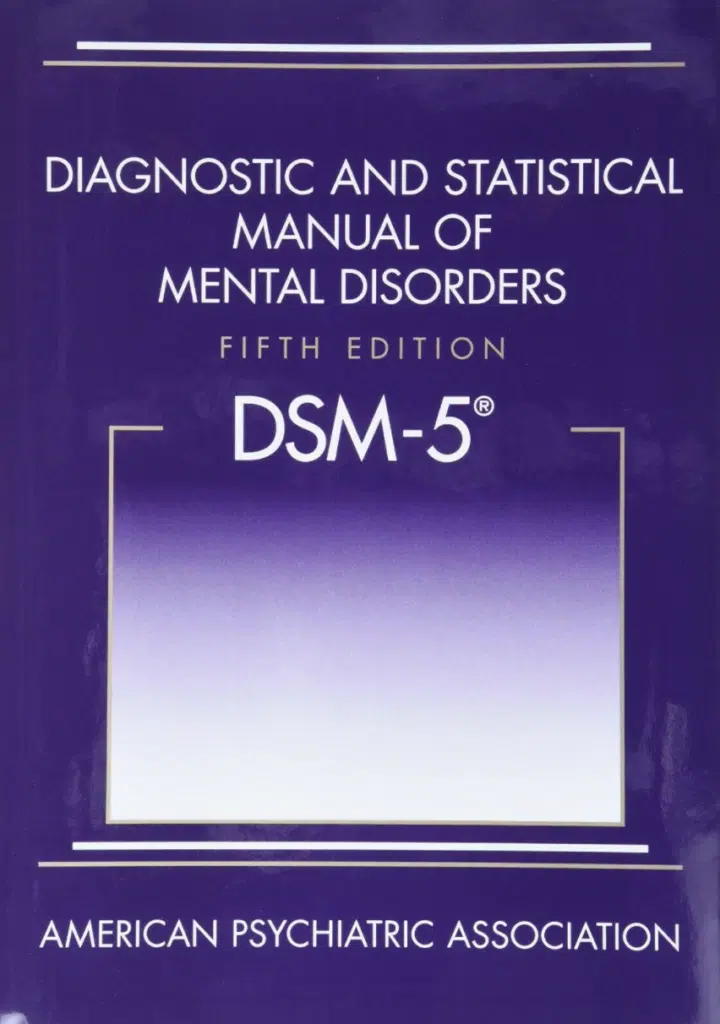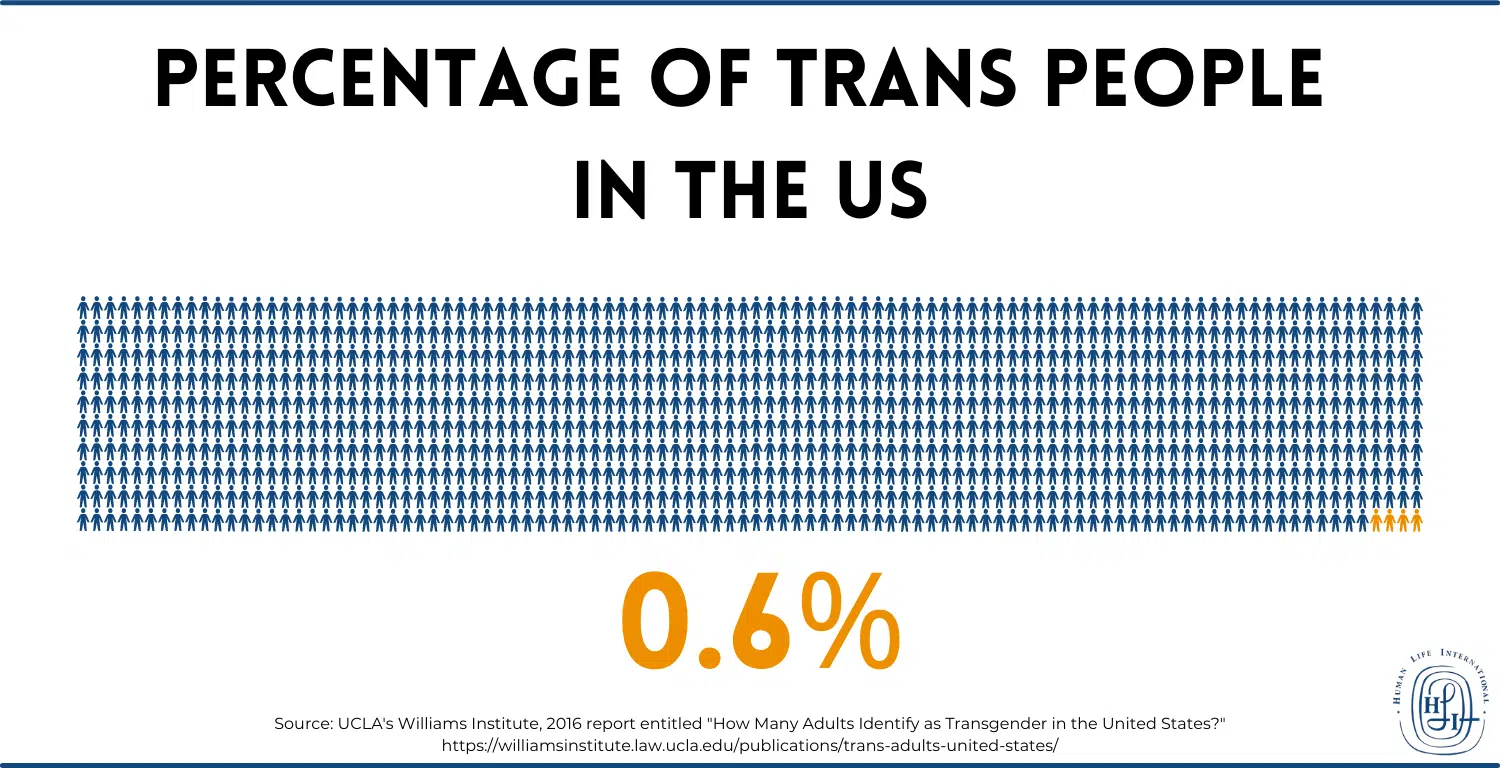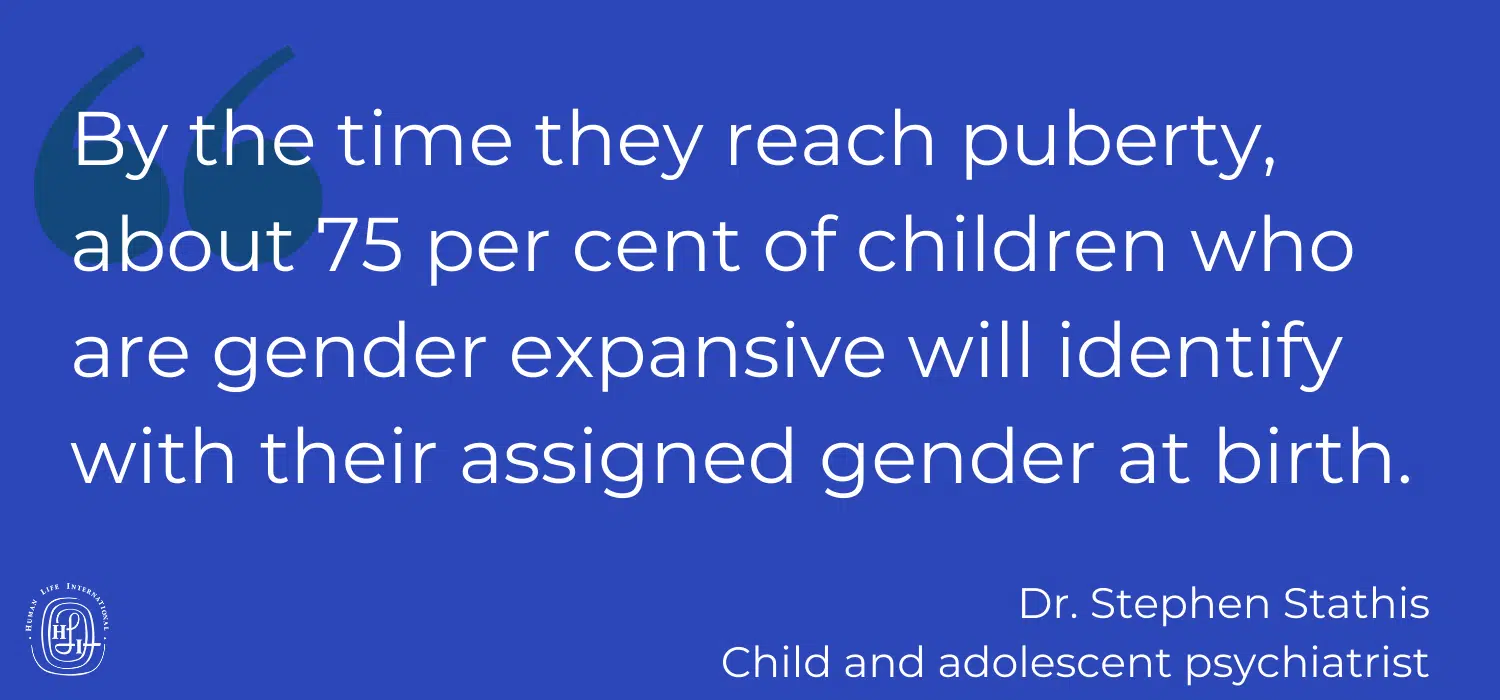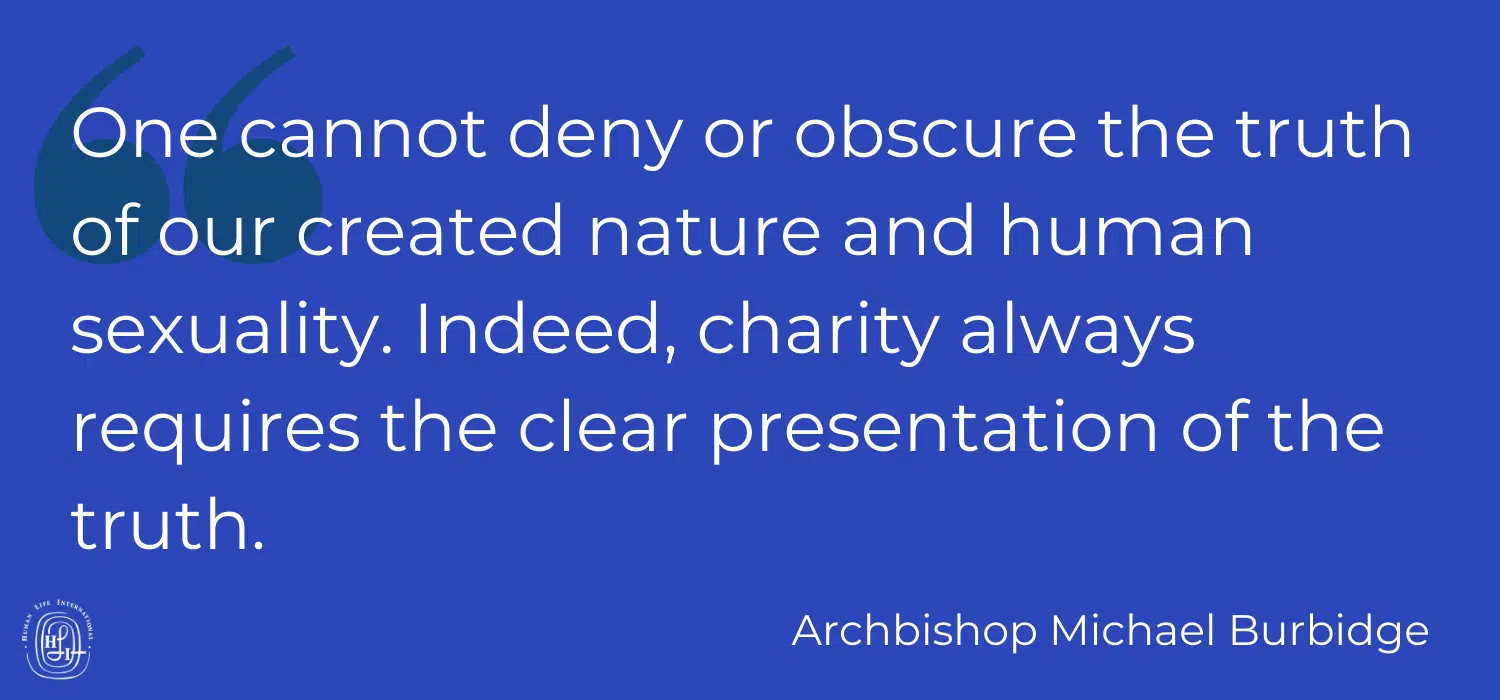The word dysphoria means “a state of feeling very unhappy, uneasy, or dissatisfied.” Gender dysphoria occurs when a person feels a persistent incongruence or disconnect between their biological sex and the one they identify with.
In 2013, the American Psychiatric Association published its latest version of the Diagnostic and Statistical Manual of Mental Disorders—the DSM-5. This comprehensive volume lists, defines, and classifies mental disorders so that mental health professionals can better understand and treat people.

In this latest version, the APA replaced “gender identity disorder” with “gender dysphoria.” It did so in the hopes that it would “avoid stigma and ensure clinical care for individuals who see and feel themselves to be a different gender” than the one they were born as. People with GD feel like they don’t belong in their bodies. They may even feel a sense of disgust with their genitals. This leads them to want to live as the opposite sex, or as transgender.
The APA goes on to say that “it is important to note that gender nonconformity is not in itself a mental disorder. The critical element of gender dysphoria is the presence of clinically significant distress associated with the condition.”
By replacing the word disorder with dysphoria, the organization hoped to help remove the stigma that the person is “disordered.” The APA states that “the changes regarding gender dysphoria in DSM-5 respect the individuals identified by offering a diagnostic name that is more appropriate to the symptoms and behaviors they experience without jeopardizing their access to effective treatment options.”
However, this change in terminology has created a new problem. When doctors and other medical professionals stop seeking and trying to treat the underlying cause of why the person feels gender dysphoria but instead encourage transition—either with hormones or surgery—to the opposite sex, they are doing the person a disservice.
Barring a chromosomal abnormality, human beings are born as either male or female. If a person is born male (or female) and feels distress because of that, he and the medical professionals must work together to determine the root cause of those feelings so that he can feel comfortable in, and begin to love, his own body without having a desire to harm or alter it.
Why Did the DSM Change Its Terminology?
To determine how best to deal with “gender identity disorder” and the growing desire of professionals who called for a change in terminology, the APA created a Sexual and Gender Identity Disorders Work Group. Some members suggested removing the term from the DSM totally. However, others felt that might prevent insurance companies from covering medical and psychiatric care.
According to the APA:
Persons experiencing gender dysphoria need a diagnostic term that protects their access to care and won’t be used against them in social, occupational, or legal areas. When it comes to access to care, many of the treatment options for this condition include counseling, cross-sex hormones, gender reassignment surgery, and social and legal transition to the desired Gender Dysphoria gender.
The APA is right to emphasize that people who experience gender dysphoria need care and compassion. Sadly, many of the treatments they propose as “care” damage the body instead of healing the mind. A growing number of people are in danger of being harmed by this approach.
How Common Is Gender Dysphoria?
UCLA’s Williams Institute compiled a report using the latest data from the CDC’s Behavioral Risk Factor Surveillance System. It then estimated the number of transgender people in the US to comprise about 0.6% of adults. That translates to 1.4 million adults.
Psychology Today reports on the DSM-5 estimates, which find somewhat lower rates of gender dysphoria:
According to the DSM-5, among [biological males], approximately 0.005 percent to 0.014 percent are later diagnosed with gender dysphoria. Among [biological females], approximately 0.002 percent to 0.003 percent are later diagnosed with gender dysphoria. Because these estimates are based on the number of people who seek formal treatment—including hormone therapy and gender confirmation surgery—these rates are likely an underestimate.
As more people are admitting to feelings of gender dysphoria, we are also seeing a growing body of individuals who know someone affected. A June 2021 Pew Research poll addressed this. According to the poll, 42% of Americans say they know someone who considers themselves transgender.
Thus, it is vital that we help people with GD understand that their bodies are the way that God intended them to be and that they are gifts to be both cherished and respected.
Do We “Stigmatize” Those with Gender Dysphoria by Asserting They Have a Mental Disorder?
According to the APA:
The Gender Dysphoria diagnosis functions as a double-edged sword. It provides an avenue for treatment, making medical and surgical options available…. However, it also has the potential to stigmatize [those with gender dysphoria] by categorizing them as mentally ill. The ultimate goal would be to categorize [their] treatment under an endocrine/medical diagnosis.
Stigmatizing people will only add to their hurt. Our Catholic faith teaches that, regardless of whether we approve of how a person lives his/her life, we must not judge or stigmatize. But that doesn’t mean that we have to shy away from the truth that our bodies are temples of the Holy Spirit, and as such, should never be maimed or altered.
Our faith also teaches that God created man and woman in His image, that there are just two sexes, and that each complements the other. Further, we know that God does not make mistakes. He created us out of love, and we are perfect in His eyes.
That is why our first and most important goal is to understand those who experience gender dysphoria and help them understand themselves, as best they can, for it is not always known why gender dysphoria has occurred in certain people.
Limited research has been done, and researchers can only hypothesize as to the causes. Psychology Today states that “the causes of gender dysphoria are currently unknown, but genes, hormonal influences in the womb, and environmental factors are all suspected to be involved.”
Researchers Garima Garg, Ghada Elshimy, and Raman Marwaha concur. In an article entitled “Gender Dysphoria,” they address the etiology of GD, saying that GD is thought to arise from a “complex biopsychosocial link” that includes such factors as “in-utero exposure to phthalates in plastics and polychlorinated biphenyls,” “childhood abuse, neglect, maltreatment, and physical or sexual abuse,” and even “faulty neuronal development and differentiation in the hypothalamic links.”
Thus, while we have yet to understand GD’s origins, we do know it can have devastating effects on people. Those experiencing GD may refuse or be unable to make friends. Children and adolescents might not want to go to school for fear of being made fun of. Adults may be unable to work. GD may also harm relationships with family and may make it difficult to find a significant other. People often feel misunderstood and unloved. This leads to feelings of depression and anxiety. It may even lead to the desire to harm themselves, substance abuse, eating disorders, or suicide.
This is why psychiatric treatment is of utmost importance. And that is why we must always treat people with compassion.
Do Children “Grow Out” of Gender Dysphoria?
As a person grows through puberty and into young adulthood, the feelings of gender dysphoria can be static, or they can come and go. Statistics vary regarding the percentage of people who grow out of these feelings of discomfort in their bodies.
Many people do “grow out” of these feelings. Studies and practicing psychiatrists have discovered this. For instance, Dr. Stephen Stathis, a child and adolescent psychiatrist, has found that among the children he has worked with, about 75% will eventually identify with their biological sex.
An article in Transgender Trend states:
Ten studies have been conducted looking at whether gender dysphoria persists throughout childhood. On average 80% of children change their minds and do not continue into adulthood as transgender. Some of these studies are very old, the first being published in 1968 and others in the 1980s. This was during a time when being transgender was not accepted as widely in society as it is now so it can be argued that this may have influenced many to change their minds….
However, the most recent study published in 2013 confirms once again that gender dysphoria does not persist in most children past puberty.
Other studies claim that 64 – 94% of people who admit gender dysphoria will eventually embrace their biological sex and essentially “outgrow” it. The wide variation in these numbers comes from the way the questions were asked and problems with follow-through with respondents. However, most studies agree that the majority of children and adolescents will eventually grow out of GD.
But that still leaves roughly a million people in the US alone who do not.
Many people share stories of how they grew out of these feelings. For instance, this author writes about her experience, saying she grew up being the quintessential “tomboy.” She played with action figures, had boys as friends, hated dresses or anything pink, and played the sports games that typical boys play. In addition, she dreaded puberty. But then she hit her late teen years, and her perspective changed. Suddenly she liked putting on dresses and everything that encompasses a “traditional” female role.
This is not uncommon. Many people have said that, as a child, they gravitated toward the opposite sex. That is why, according to the Mayo Clinic, to be correctly diagnosed with gender dysphoria, a person must have feelings of distress for at least six months. Further, at least two of the following must occur:
- A marked difference between your inner gender identity and primary and/or secondary sex characteristics, or anticipated secondary sex characteristics in young adolescents
- A strong desire to be rid of primary and/or secondary sex characteristics because of a marked difference with your inner gender identity, or a desire to prevent the development of anticipated secondary sex characteristics in young adolescents
- A strong desire for the primary and/or secondary sex characteristics of the other gender
- A strong desire to be of the other gender or an alternate gender
- A strong desire to be treated as the other gender or an alternate gender
- A strong conviction that you have typical feelings and reactions of the other gender”
Gender dysphoria can affect all aspects of life. It can cause significant distress in social settings, in the job setting, and in personal relationships—with family or friends.
How Should We Address GD as Catholics?
For anyone experiencing gender dysphoria, the most important thing you must know is that you are loved. The Church assures you of this.
Many dioceses have addressed gender dysphoria and how the faithful must respond to someone experiencing it. For instance, in January 2022, the Archdiocese of Milwaukee released its Catechesis and Policy on Questions Concerning Gender Theory. The document teaches that humans are created in God’s image and have both a body and soul, that feelings of gender dysphoria are not sinful, and that people with GD should be treated with charity. But it also stresses that our biological sex is a gift from God and should not be changed. The archdiocese encourages people with GD to work to seek a “harmony between their biological sex and ‘gender’ not through a rejection of one or the other, but through turning to Christ and to all that the Church provides.”
Arlington’s bishop, Michael F. Burbidge, also recently addressed gender dysphoria in “A Catechesis on the Human Person and Gender Ideology.” While stressing that we must treat people with GD with charity, he also cautioned that “one cannot deny or obscure the truth of our created nature and human sexuality. Indeed, charity always requires the clear presentation of the truth.”
That is why counseling is of vital importance.
Catholic Counseling
Treatment for any mental or physical health issue depends on the individual. It is no different with GD.
Treatment generally includes counseling that provide the person with coping skills and support. It can also include family counseling, so that parents can appropriately support their children.
Our Catholic faith teaches that we must never maim or drastically alter the body we were given at birth. Thus, we cannot advocate for or encourage people to take drugs or have surgery to change their biological bodies, as we know this can actually do more harm than good.
Therapy that helps the person see the goodness of their body, the beauty of who they truly are, and the love of a God who made them will go a long way toward helping people learn to embrace the bodies they were born with.
There are many organizations filled with good people who want to help. If you, or someone you know, have feelings of gender dysphoria, we encourage you to seek them out to help heal the brokenness you feel.
Final Thoughts
I want to say something to anyone who is living with gender dysphoria and who feels unloved or unworthy. You are loved. You are worthy. And you matter. Even if you don’t know Christ or don’t want to know Christ, He knows you. He loves you.
Maiming your body will not lead to the peace you so desperately desire. Regardless of whether or not you believe this, the truth is that your body was beautifully and wonderfully made by God. You are not a mistake.
Find a good support system. Seek counseling. Understand that you are loved and that you can love yourself, too. There are many people out there who want to help you overcome the feelings of loneliness, isolation, and self-loathing. Reach out to them.
And finally, know that God is with you. He understands your pain. And He will never abandon you.
Susan Ciancio has a BA in psychology and a BA in sociology from the University of Notre Dame, with an MA in liberal studies from Indiana University. Since 2003, she has worked as a professional editor and writer, editing both fiction and nonfiction books, magazine articles, blogs, educational lessons, professional materials, and website content. Fourteen of those years have been in the pro-life sector. Currently Susan writes weekly for HLI, edits for American Life League, and is the editor of its Celebrate Life Magazine. She also serves as executive editor for the Culture of Life Studies Program, an educational nonprofit program for k-12 students.












Just a note on data. You depicted a graph based on Williams Institute that shows 0.6% suffer from GD, but then you bring the DSM numbers and you claim they match that estimate, which they certainly don’t.
“According to the DSM-5, among [biological males], approximately 0.005 percent to 0.014 percent are later diagnosed with gender dysphoria. Among [biological females], approximately 0.002 percent to 0.003 percent are later diagnosed with gender dysphoria.”
0.49*(0.014%-0.005%)/2+0.51*(0.003%-0.002%)/2=0.00246% This is 250 times less than 0.6%!!
Or did I miss something?
So, based on best scientific data you provided: 0.00246%*350M=8600 people in US or 1/40,000.
What we get today, where 40% (I don’t believe this number) claim they know someone is therefore an altogether different thing. It’s a social phenomena, rather than a psychological issue or an environmental issue. Environmental issue is yet to be proven in research, but in any case would not appear in a step function.
Hi Joe,
Thank you for pointing this out. The author probably meant they were ‘similar’ as in less than 1%, but the two numbers are very different when compared to each other. We have changed the text of the article. The ‘40% know someone who is transgender’ statistic could be so high because they count anyone who considers themselves to be transgender. The DSM statistic, which is by far the lowest, only counts people who seek formal treatment for gender dysphoria.
Thank you for reading and commenting!
As a psychologist, I know that there is much more to this than you understand. There are things other than genetics and anatomy that influence a person’s sense of gender. Just as has been found with autism, there has been an increase in the prevalence of atypical gender/sexual preference. This is not a fad, an artifact of the decrease in religious affiliation, or the result of social stressors. There is increasing evidence that environmental factors (ex. chemical elements in foods, polution, etc.) are changing the way the endocrine system works and the way children develop. Gender is much, much more complicated than X and Y chromosomes. We need to be careful not to automatically assume that there are pscychological underpinnings to GD. To me it is not a moral or religious issue. I just go with the research and keep my mind open, either way.
Truthful and loving. Thank-you for addressing such a heavy topic.